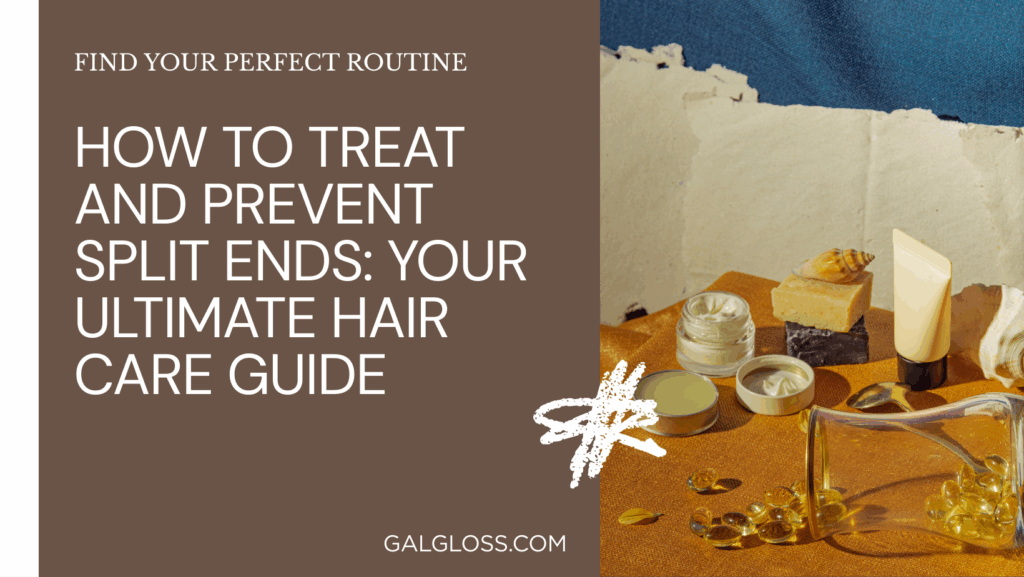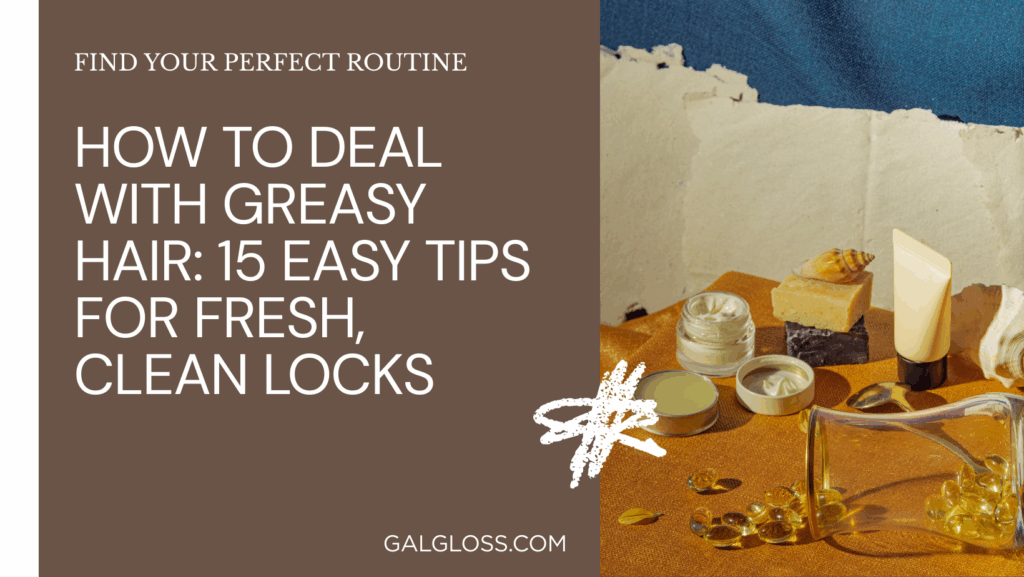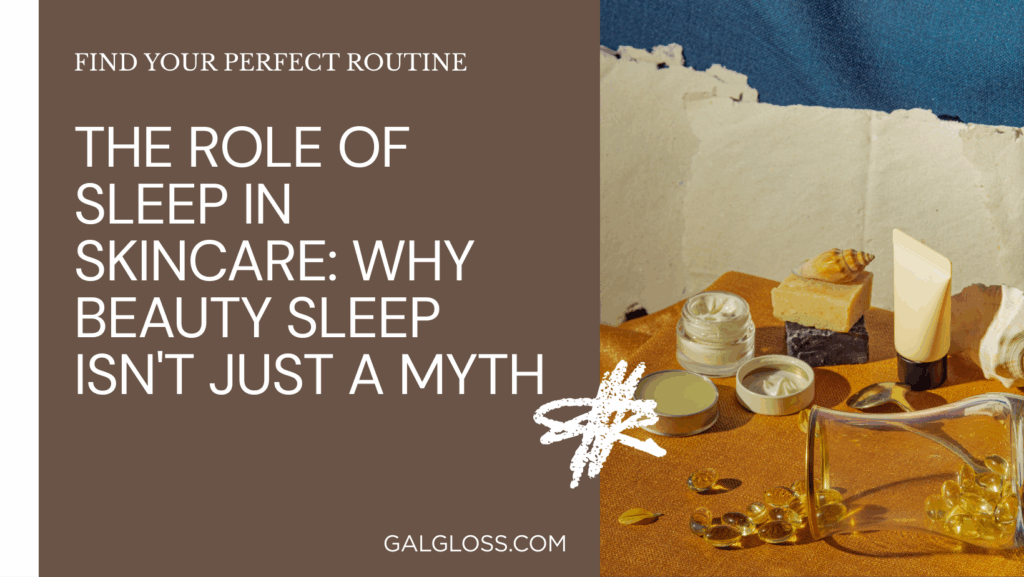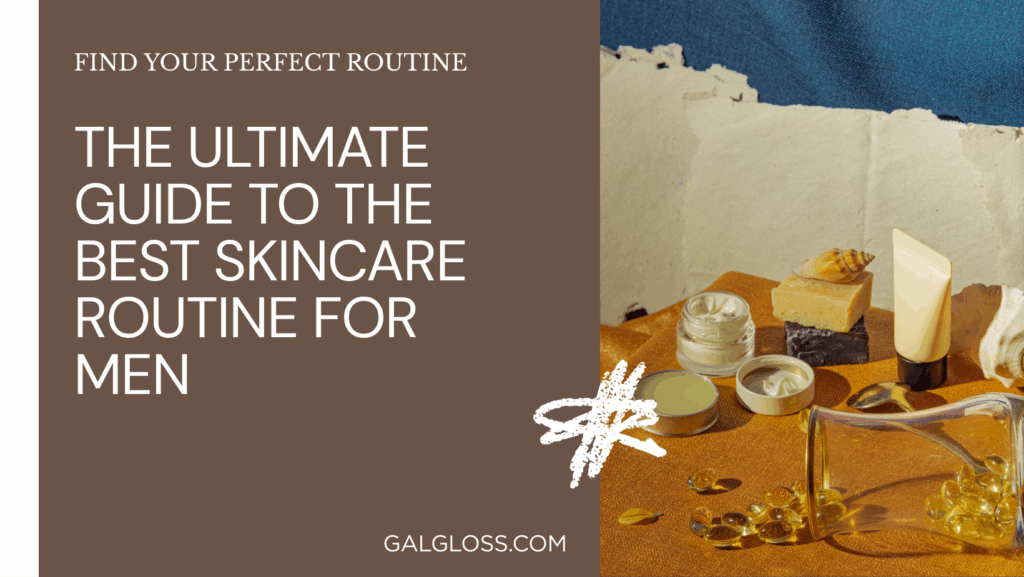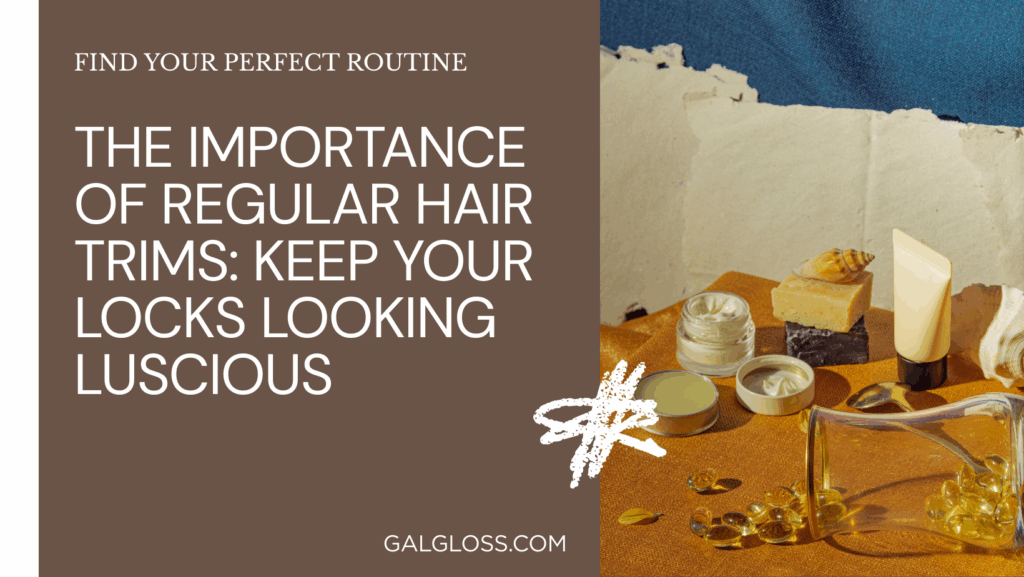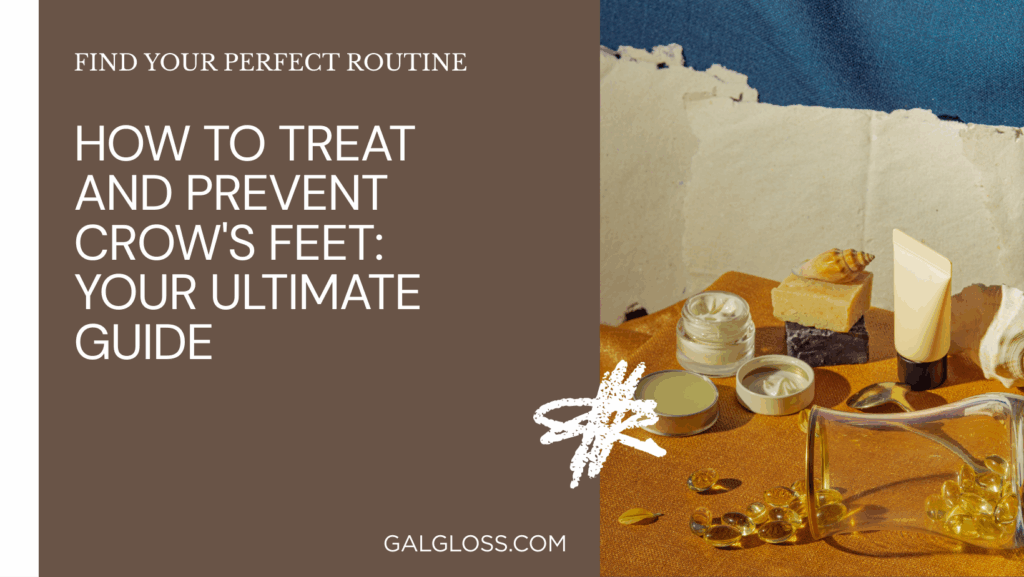Ever feel like you’re channeling your inner mad scientist with hair that’s standing on end? You’re not alone! Hair static is a pesky problem that can turn even the best hair days into a frizzy nightmare. But don’t worry – we’ve got your back (and your hair)!
So, what’s the deal with hair static anyway? Picture this: tiny electrical charges build up in your hair, causing strands to repel each other like mini magnets. The result? That oh-so-lovely floating, fly-away look we all dread.
Who’s most likely to suffer from this hair-raising issue? Well, if you’ve got fine, dry, or color-treated hair, you’re more prone to static. And let’s not forget about winter – that cold, dry air is practically a red carpet for static electricity.
But here’s the good news: taming that static is totally doable. Ready to zap that static and rock smooth, frizz-free locks? Let’s dive into the world of hair static and discover 15 easy tricks to keep your mane in check!
Understanding Hair Static
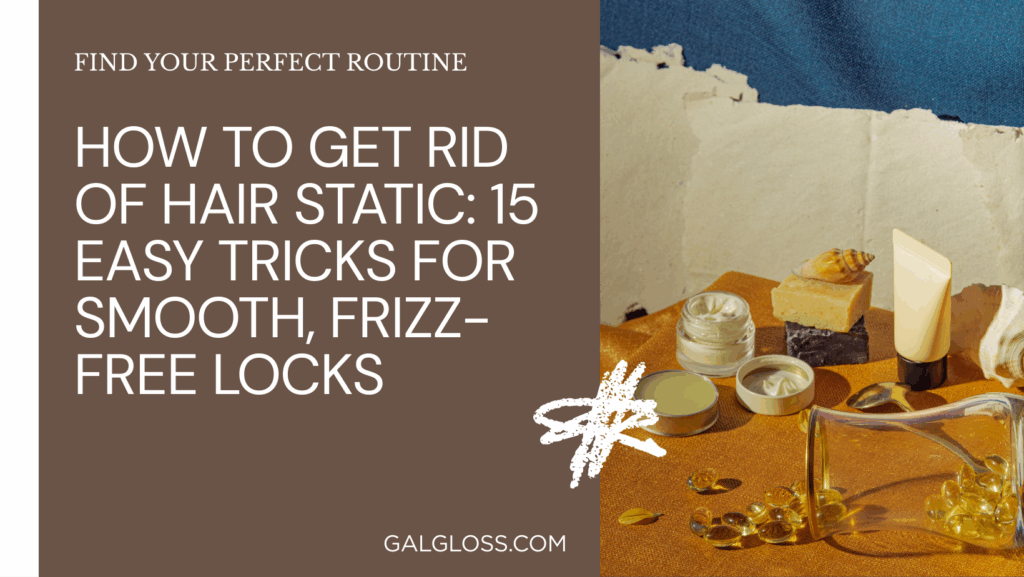
Before we jump into solutions, let’s get to the root of the problem. What exactly causes hair to go all Einstein on us?
The Science Behind Static Electricity in Hair
Remember those science experiments with balloons in school? Hair static works on the same principle. When two materials rub together, electrons can transfer from one surface to another. With hair, this often happens when it rubs against dry air, synthetic fabrics, or even itself.
Common Causes of Hair Static
- Dry Air: Winter’s low humidity is static’s best friend.
- Friction: Brushing, combing, or even wearing a hat can create static.
- Synthetic Materials: Your clothes and bedding might be culprits.
- Heat Styling: Overdoing it with hot tools can dry out hair, making it more static-prone.
Now that we know what we’re up against, let’s tackle those flyaways with some tried-and-true techniques!
15 Effective Ways to Banish Hair Static
1. Moisturize, Moisturize, Moisturize!
Think of moisture as your hair’s personal bodyguard against static. Well-hydrated hair is less likely to pick up those pesky electrical charges. How can you boost moisture?
- Use a hydrating shampoo and conditioner
- Apply a weekly deep conditioning mask
- Don’t skip the conditioner, even if you have fine hair
2. Switch to a Metal Comb
Ditch that plastic comb! Metal combs can help distribute oils from your scalp through your hair, reducing static. Plus, they conduct electricity, which can help neutralize those charges.
3. Use Leave-In Conditioner
A leave-in conditioner is like a superhero cape for your hair. It adds an extra layer of moisture and protection against static-causing friction. Look for one with natural oils like argan or jojoba.
4. Try Anti-Static Hair Products
Yep, they exist! Anti-static sprays and serums are designed specifically to combat flyaways. They often contain ingredients like glycerin or silicones that coat the hair and reduce static.
5. Embrace Natural Oils
Your hair’s natural oils are its built-in static fighters. Try these tricks:
- Brush your hair before bed to distribute oils
- Use a boar bristle brush to spread oils from root to tip
- Apply a tiny amount of coconut or argan oil to dry ends
6. Adjust Your Shower Routine
Hot showers might feel amazing, but they’re not doing your hair any favors. Try these shower tweaks:
- Lower the water temperature
- Finish with a cool rinse to seal the hair cuticle
- Don’t overwash your hair – every other day is often enough
7. Invest in a Humidifier
Combat dry indoor air by adding moisture to your environment. A humidifier in your bedroom can work wonders for both your hair and skin.
8. Avoid Heat Styling When Possible
Heat tools are often static’s partners in crime. When you can, let your hair air dry. If you must use heat:
- Always use a heat protectant spray
- Keep the temperature on the lower side
- Invest in ionic hair tools, which can help reduce static
9. Use Fabric Softener Sheets
Here’s a weird but effective hack: gently run a dryer sheet over your hair. The anti-static properties that keep your clothes cling-free work on hair too!
10. Try the Dryer Sheet Hack
Take the dryer sheet trick a step further:
- Rub a sheet on your hairbrush before use
- Tuck a sheet in your pillowcase at night
- Keep a sheet in your bag for on-the-go touch-ups
11. Opt for Silk or Satin Pillowcases
Cotton pillowcases can rough up your hair cuticles and create friction. Silk or satin pillowcases reduce friction and help your hair retain moisture. Plus, they feel luxurious!
12. Apply Hairspray Strategically
A light mist of hairspray can tame flyaways. For targeted control:
- Spray a bit on your palms and smooth over your hair
- Spritz some on a toothbrush and gently brush down flyaways
- Use unscented hairspray if you’re sensitive to fragrances
13. Use Anti-Static Laundry Spray on Your Brush
Another clever hack: lightly spray your hairbrush with anti-static laundry spray. Just be sure to let it dry completely before using it on your hair.
14. Consider Your Clothing Choices
Your wardrobe can be a static culprit. When possible:
- Choose natural fibers like cotton over synthetics
- Use a static guard spray on your clothes
- Touch a metal object before putting on static-prone items
15. Deep Condition Regularly
Make deep conditioning a part of your hair care routine:
- Use a deep conditioner once a week
- Try an overnight hair mask for extra hydration
- Look for products with ingredients like shea butter or keratin
Prevention Tips for Long-Term Static Control
While these tricks can help in the moment, preventing static in the long run is even better. Here are some lifestyle changes that can make a big difference:
Diet and Hydration
What you put in your body affects your hair too:
- Drink plenty of water to keep your hair hydrated from the inside out
- Eat foods rich in omega-3 fatty acids, like salmon and avocados
- Consider a biotin supplement (but talk to your doctor first)
Regular Trims
Split ends are more prone to static. Keep your hair healthy with regular trims every 6-8 weeks.
Protective Hairstyles
Reduce friction by wearing protective styles like braids or buns, especially when it’s windy or you’re wearing static-prone clothing.
When to Seek Professional Help
Sometimes, persistent static can be a sign of underlying hair health issues. If you’ve tried everything and still can’t shake the static, it might be time to consult a professional:
- See a dermatologist if you suspect scalp issues
- Consult a trichologist for specialized hair and scalp care
- Talk to your hairstylist about professional treatments like keratin smoothing
Conclusion
Dealing with hair static can feel like an uphill battle, but armed with these 15 tricks and long-term strategies, you’re well-equipped to win the war against flyaways. Remember, the key is to keep your hair moisturized, reduce friction, and be mindful of your environment.
Don’t be afraid to experiment with different methods – what works for your bestie might not work for you. Your hair is unique, and finding your perfect anti-static routine might take some trial and error. But trust me, when you find that sweet spot, you’ll be rocking smooth, static-free locks that’ll make others wonder about your secret.
So go ahead, embrace these tips, and say goodbye to those hair-raising moments. With a little patience and the right approach, static hair will be a thing of the past. Here’s to good hair days ahead – may your locks be smooth, your frizz be tamed, and your style be ever fabulous!
Remember, at the end of the day, a little static doesn’t define you. But knowing how to handle it? That’s the kind of confidence that truly makes your beauty shine through. Now go out there and show that static who’s boss!
